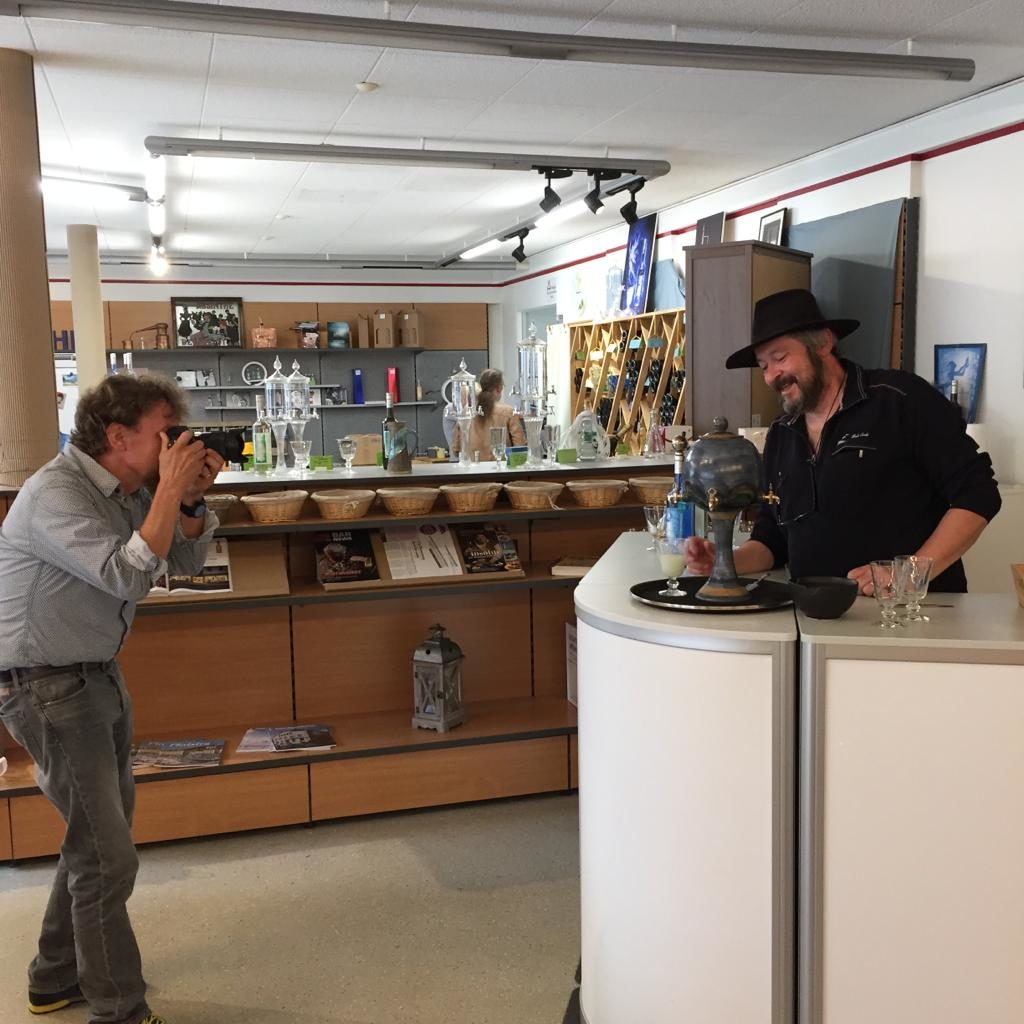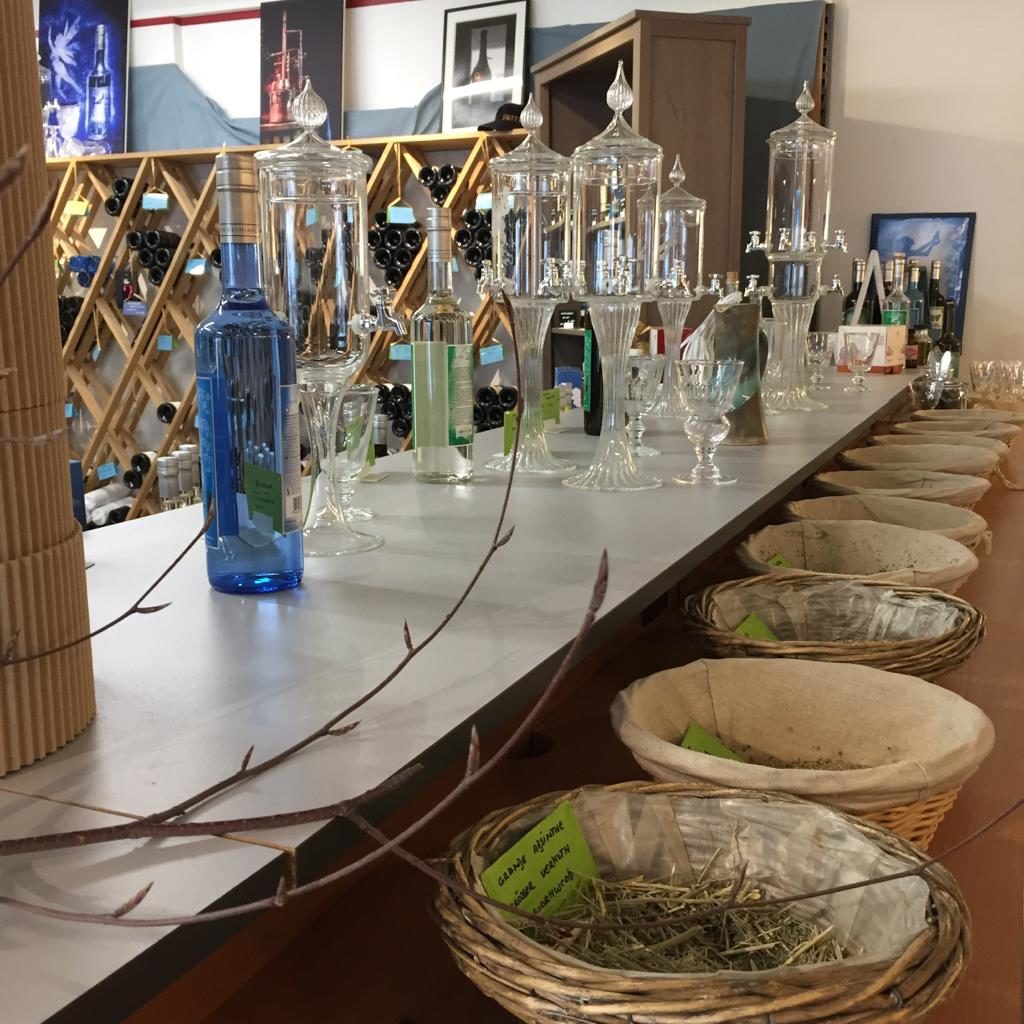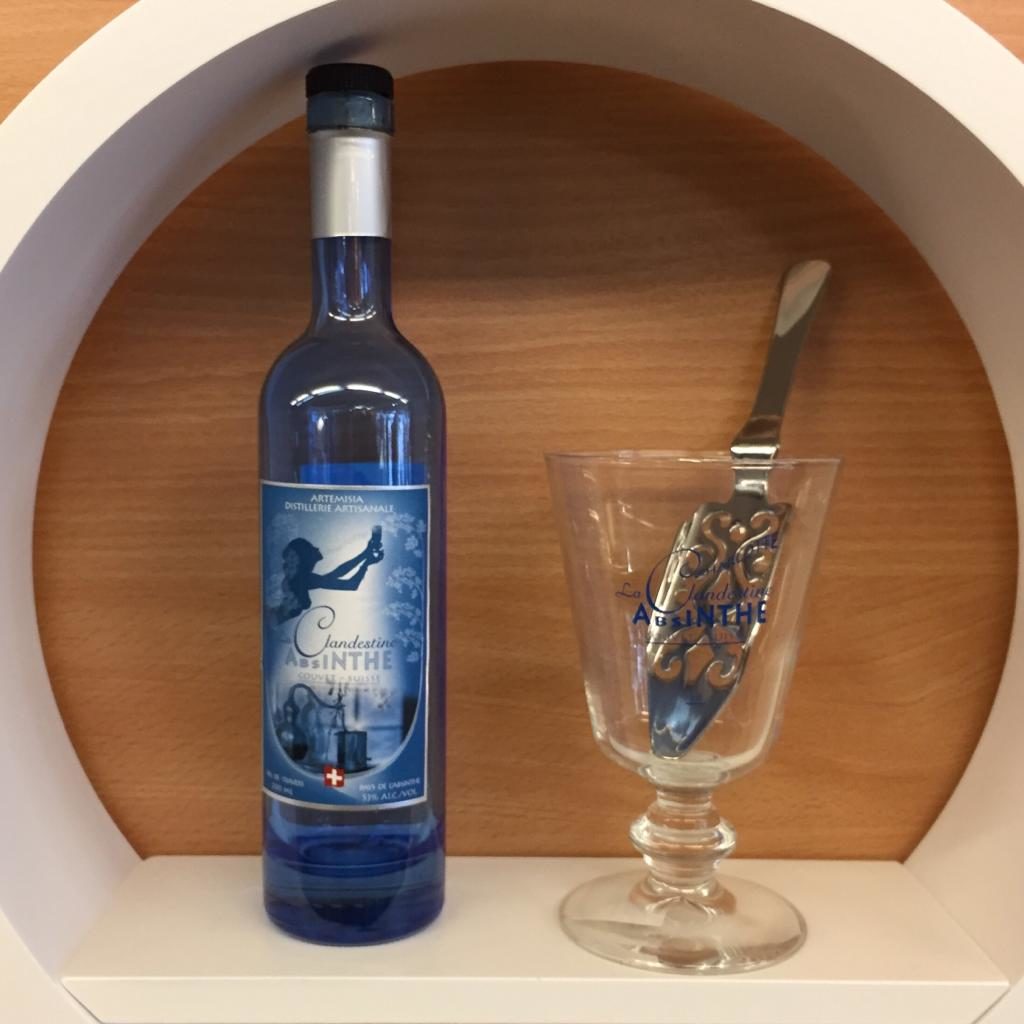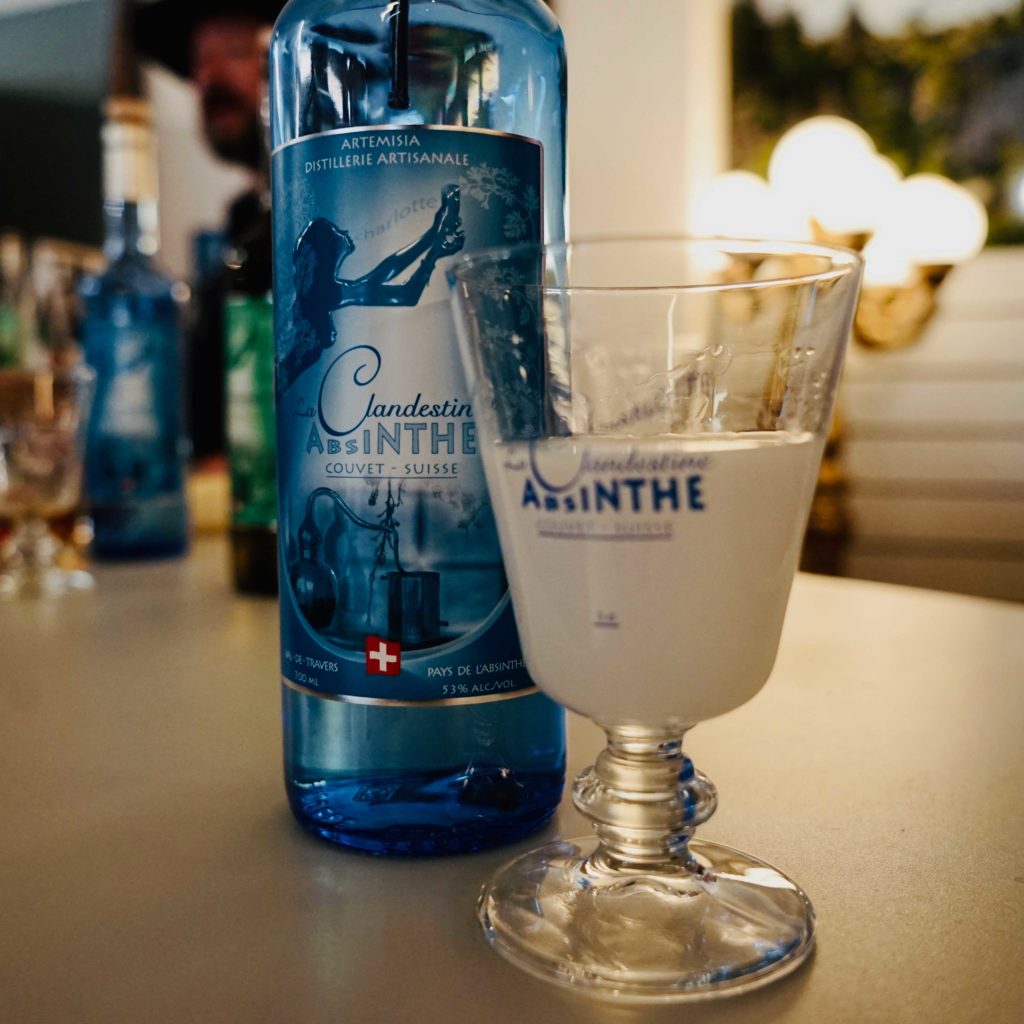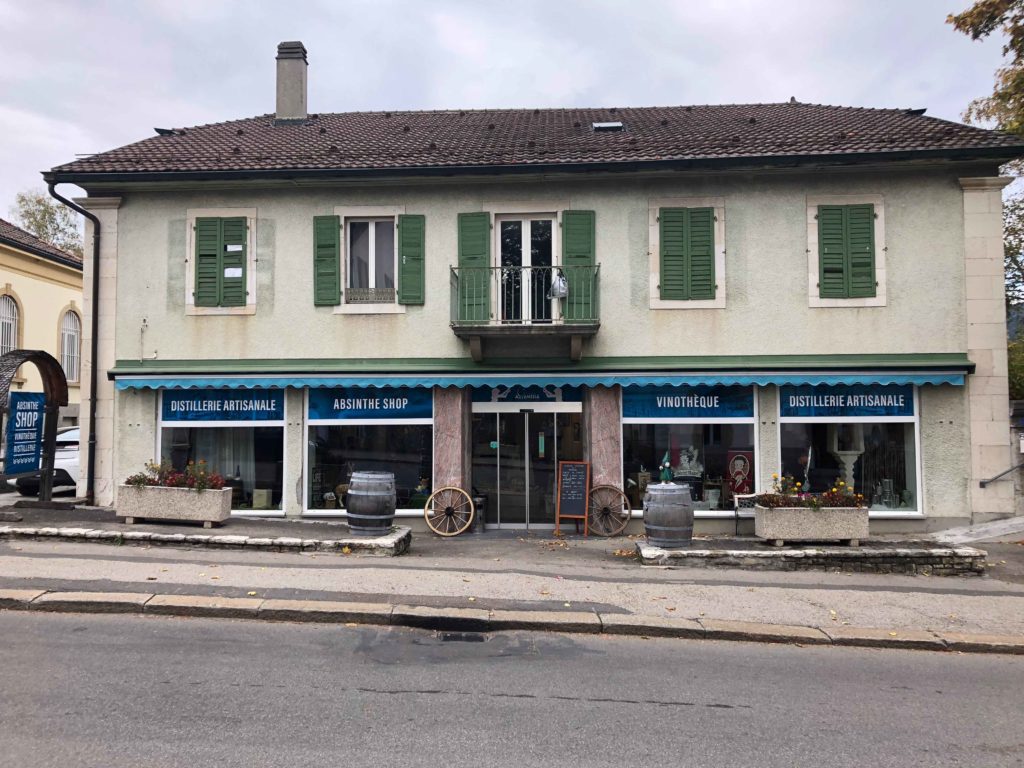A date with the Green Fairy
Distillerie d’Absinthe Artemisia
#absinthe #spirits #switzerland
Oscar Wilde, Pablo Picasso, Henri de Toulouse-Lautrec, Vincent van Gogh and Ernest Hemingway all had one thing in common: they loved absinthe. And they were not the only ones. The Green Fairy or La Bleue, as the drink was called in Switzerland during the years when it was banned, enjoyed great popularity in the 19th century. However it was not just bohemian artists and intellectuals who regularly reached for the absinthe bottle. Due to affordability the Green Fairy was popular amongst all classes of society. Phylloxera, a disease which hit French vineyards in the late 19th century, increased wine prices and cut its availability which further increased absinthe sales. Its growing popularity led to some “back street” manufacturers making absinthes: with inferior and illegal ingredients. In general excessive alcohol consumption at the time was against the background of water being the cause of many diseases and so alcohol was generally considered the safer option.
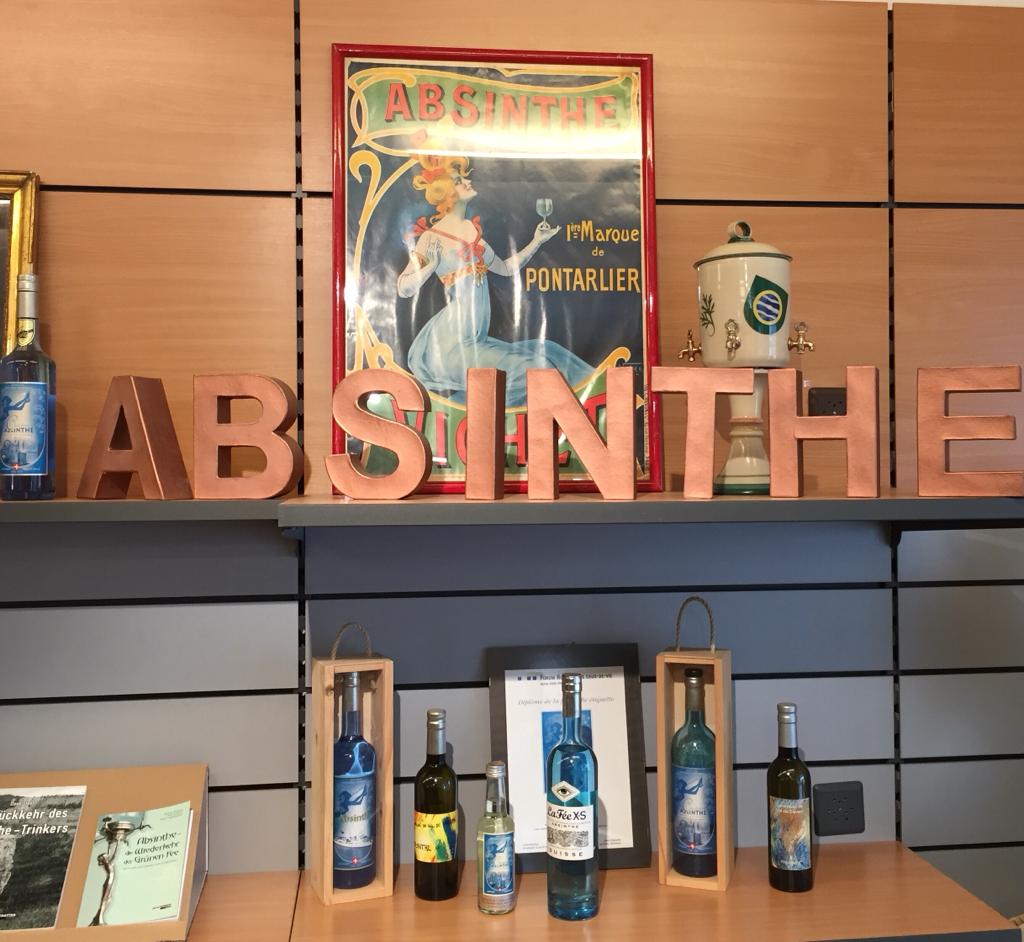
Broad anti-absinthe alliance
The enormous popularity of the spirit caused winemakers to take action as they sought to restore their business following the phylloxera outbreak. The temperance movement also viewed absinthe as an easy first target. What followed was a divided campaign which took place in many European countries and led to a ban on absinthe at the start of the 20th century. The main argument focused on the essence of wormwood, which supposedly led to the absinthe drinker’s decay. Today it has been proven that the low level of essence of wormwood in absinthe is unlikely to have triggered psychoses. More likely it was the large daily consumption level of the high-proof alcohol that led to changes in character and deaths.
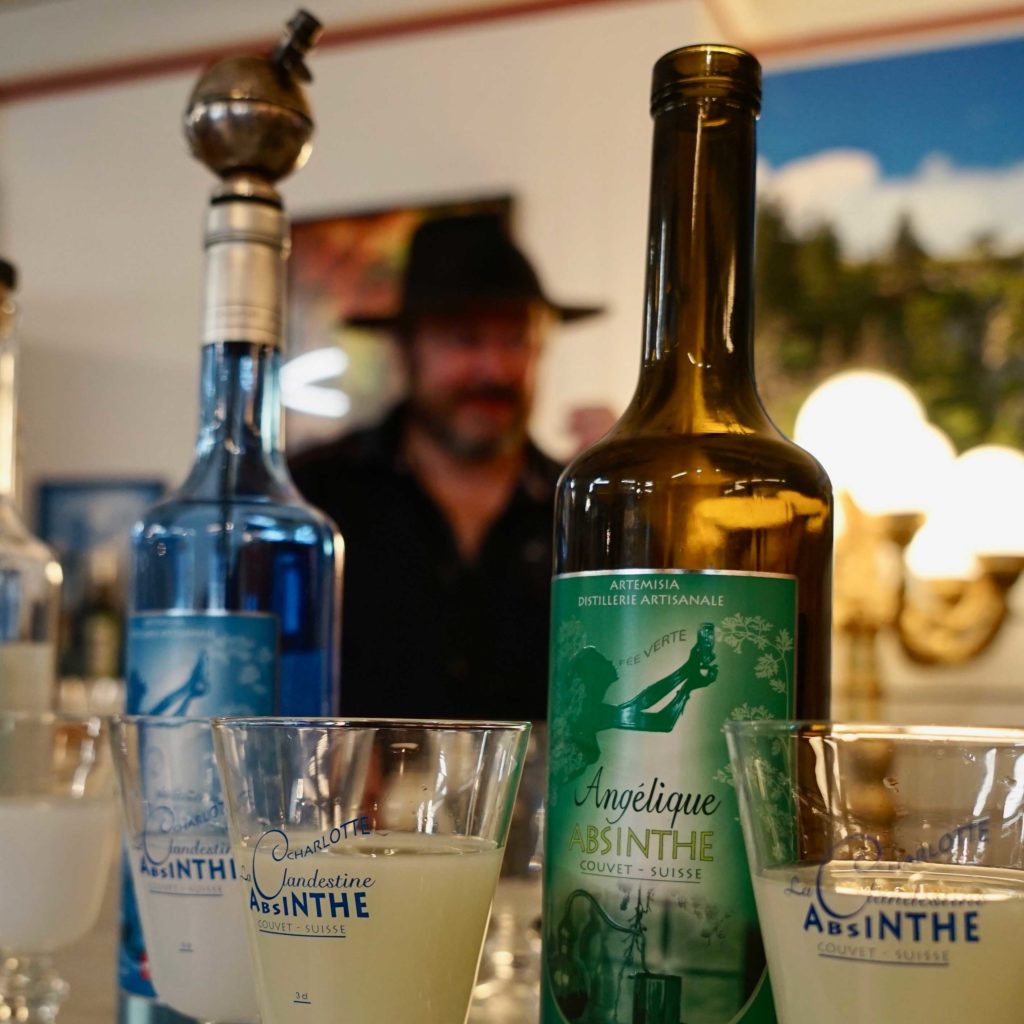
At the epicenter of absinthe
Did absinthe drinkers renounce from dinking the devils brew and turn to just wine and beer? By no means. The ban was the beginning of an era of illicit distillation. In order to learn more about this time we headed to the epicenter of absinthe production, the Val-de-Travers. This valley connects the town of Neuchâtel in the west of Switzerland to the French town of Pontarlier. Half-way between lies the small village of Couvet, where Claude-Alain and Karine Bugnon run their Distilierie d’Absinthe Artemisia. Bugnon was the first of the illegal distillers to approach the authorities in order to gain a distillers license to produce the Green Fairy once the absinthe ban was lifted in 2005 in Switzerland.
‘Absinthe is deeply embedded in our region and culture’, says the expert. In actual fact many historical sources state that from the middle of the 18th century onwards the women of Couvet developed absinthe as a tonic selling it to pharmacies. The first commercial absinthe company, Dubied Père et Fils employed Henri-Louis Pernod who then moved to France to produce his own absinthe, which would be followed after the ban by a replacement drink similar in taste but without wormwood.
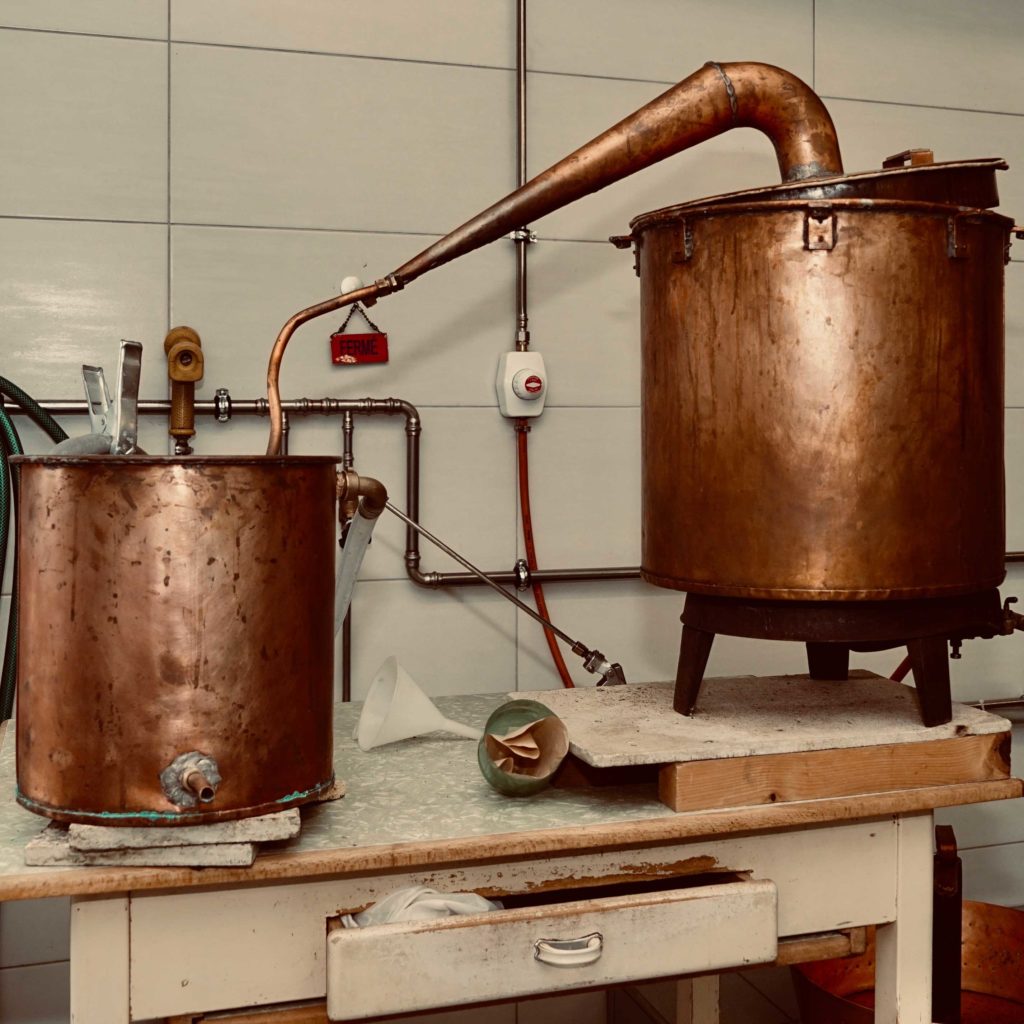
Simple production, secret recipes
The ban meant the production of absinthe became an illegal activity. Yet, behind closed doors the lovers of absinthe continued their passion. ‘It was usual for us to spend weekends together with friends making batches of absinthe,’ recalls Claude-Alain and adds smiling ‘We made about 9 liters per day and drank one during the same time it took.’ But how was it possible despite the ban to get away with this so easily? ‘Many of the ingredients needed for production could be bought legally in the pharmacies, only the further processing of them was illegal,’ explains Claude-Alain. On top of this, the production of absinthe and equipment needed is relatively simple: a mixture of dried plants are steeped overnight in a water-alcohol mixture in the distilling kettle and then redistilled, ‘So you reach a pure absinthe concentrate of 76 percent alcohol by volume which can then be diluted as wished,’ summarizes the expert.
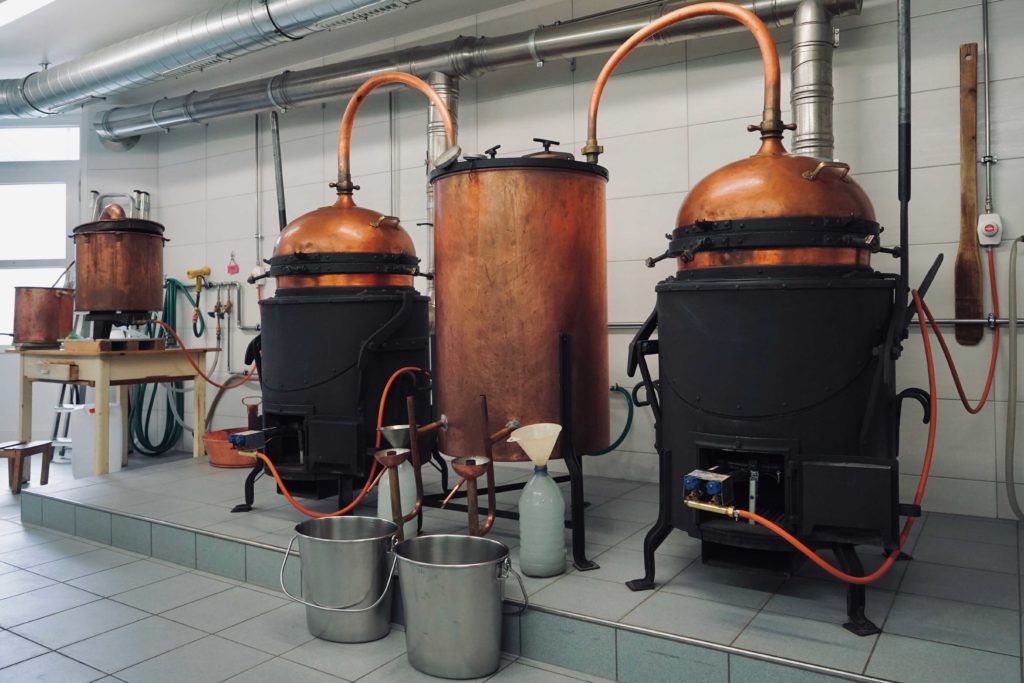
‘The quality of absinthe depends on the plants and how they are blended.’ The basic ingredients are always: green anise, fennel, wormwood (Artemisia absinthium) followed by hyssop, star anise and melissa. This basis is then enriched with further plants by the distiller following different secret family recipes which have been passed down through generations. The general rule though is, ‘Real absinthe does not have any artificial colourings or chemical additives.’
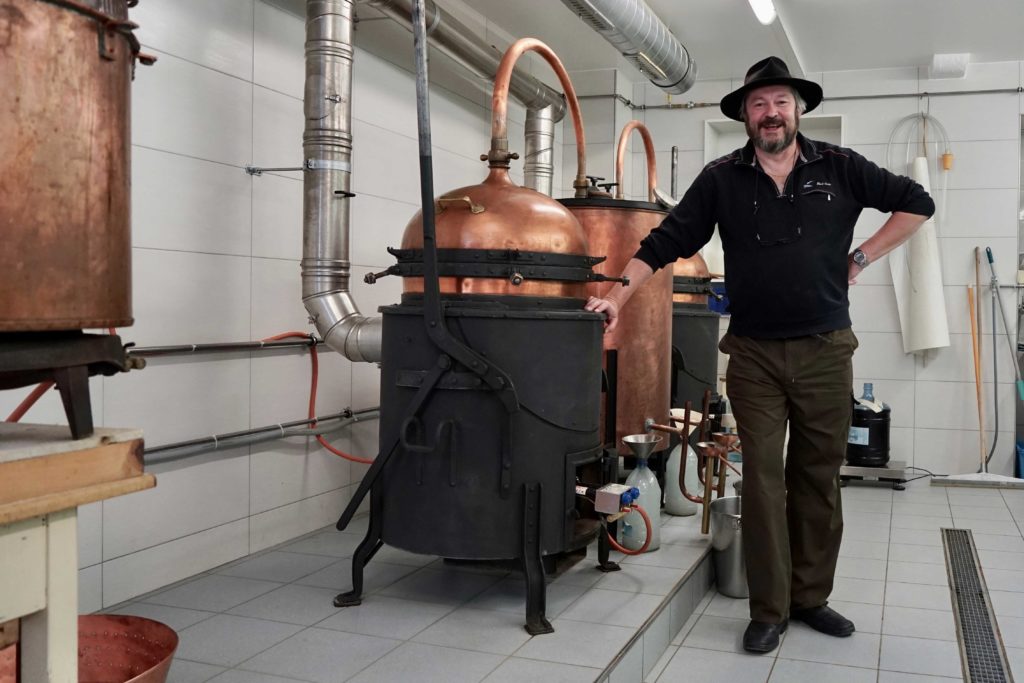
The drinking ritual is part of the pleasure
For such a legendary drink like absinthe there are appropriate drinking rituals. This already starts with the preparation of water which is added to absinthe in order to dilute it to the correct strength. A so called absinthe fountain, a decorated round glass holder with several small taps incorporated into it is used as a water container from which cold water drops into a bell-shaped absinthe glass.
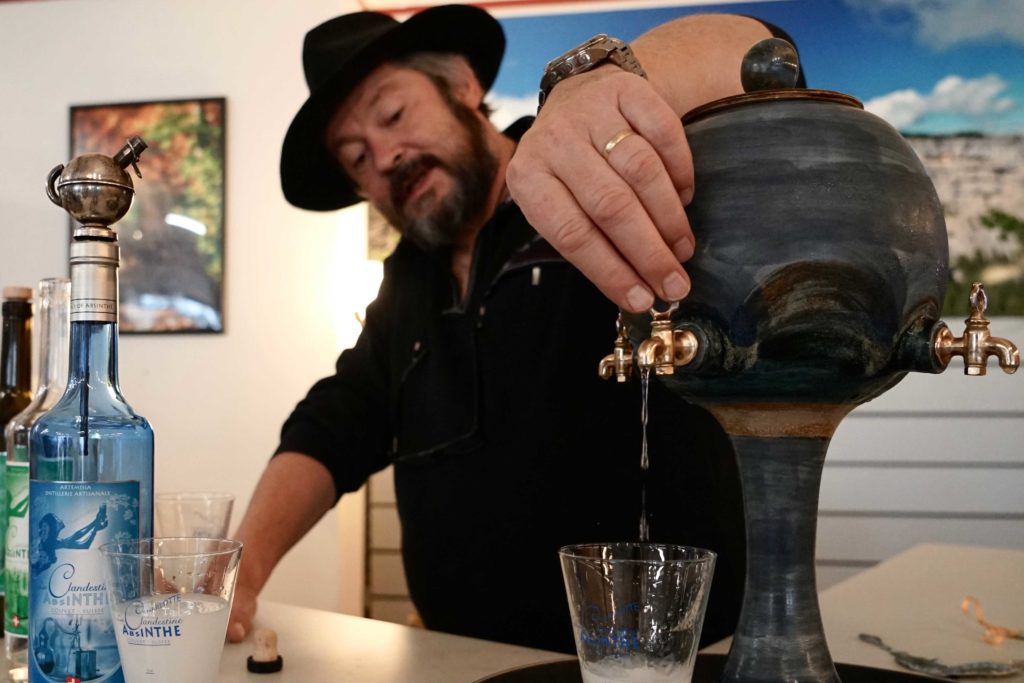
‘You dilute the absinthe very slowly with ice-cold water until it turns a milky-cloudy colour,’ explains Claude-Alain. The ideal mixing ratio is one part absinthe to 3.5 to 5 parts water. This achieves a strength of about 11 percent alcohol by volume. ‘This level of concentration allows all the various plant flavours to come through,’ says the master distiller and adds, ‘Absinthe is like a symphony. With each sip the taste spectrum broadens.’
If absinthe is drunk as a digestif one can place a sugar cube on a perforated spoon below the dripping water tap this step adds its own ceremonial note. Master Bugnon likes to smoke a cigar at this stage!
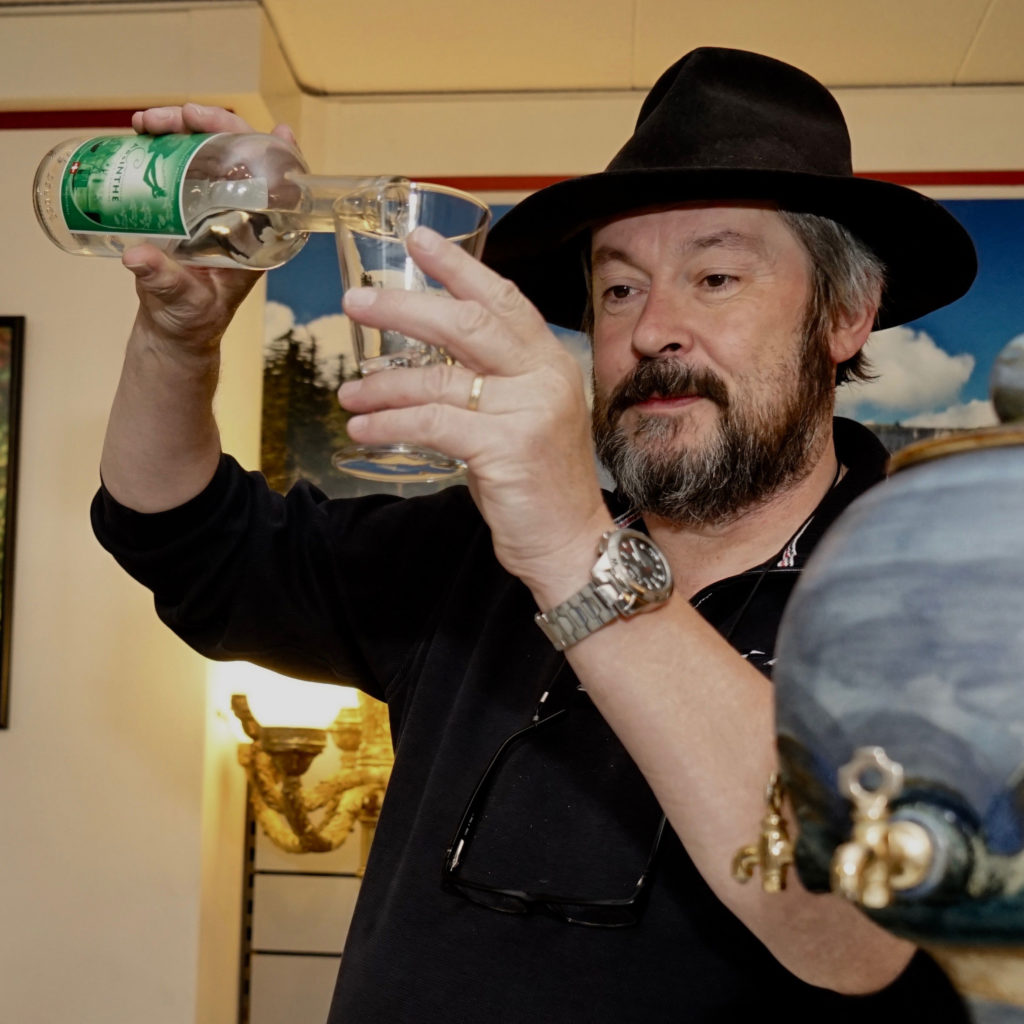
A further tip from the master: ‘Three glasses per hour is enough,’ and he knows what he is talking about. During his guided tastings he often notices how guests react euphorically at the start and drink too quickly which leads to a sudden end of a nice evening. This is because absinthe goes very quickly to the head. The ambivalence between becoming high and becoming hangover might be distinctive yet the Green Fairy has something mystical which when drunk in moderation leads to the drinker feeling happily content. Or as Oscar Wilde must have said: ‘A glass of absinthe is as poetical as anything in the world.”
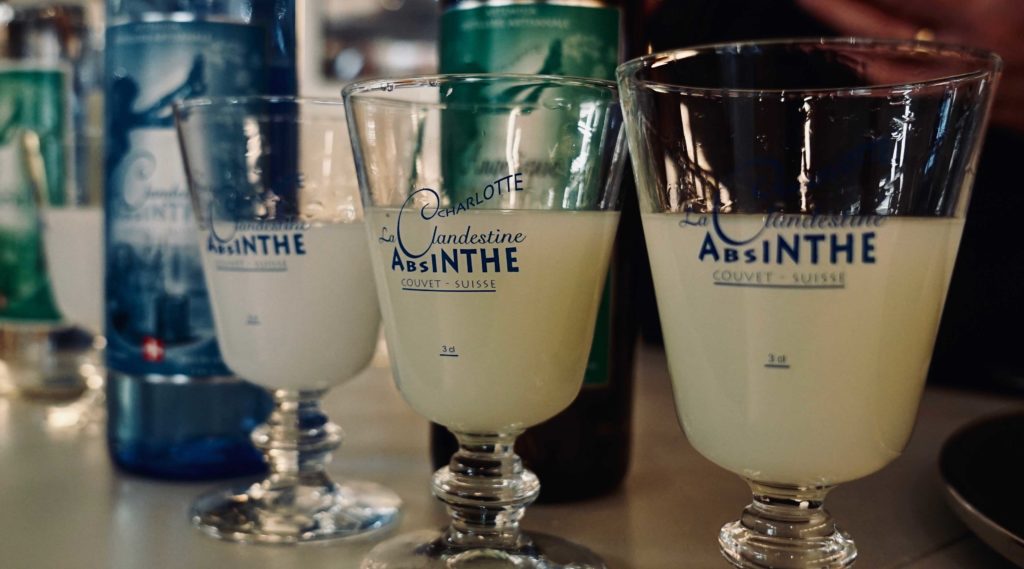
Distillerie Artemisia/Bugnon product list. (As at autumn 2018)
La Clandestine
53% Volumenprozent Alkohol
Flaschengrösse: 70cl und 20 cl
- Basiert auf einem Rezept aus dem Jahr 1935;
- Der erste, vormals illegale Absinth, der nach dem Aufheben des Verbots am 1. März 2005 eine Zulassung bekam;
- Beinhaltet über 10 Pflanzen;
- Mehrfache mit Preisen ausgezeichnet.
La Capricieuse
72% Volumenprozent Alkohol
Flaschengrösse: 70cl und 20 cl
- Basiert auf demselben Rezept wie ‘la Clandestine’, hat jedoch höheren Alkoholgehalt, welcher eine stärkere Verdünnung mit Wasser nötig macht. Dadurch wird der Abgang im Mund verlängert;
- Mehrfach mit Preisen ausgezeichnet.
Angélique
68% Volumenprozent Alkohol
Flaschengrösse: 70cl und 20 cl
- Der Name kommt nimmt Bezug auf die Verwendung einer Pflanze mit diesem Namen;
- Stärkere Pflanzennote und weniger Anisgeschmack;
- Die grüne Farbe ist rein natürlichen Ursprungs (Chlorophyll);
- Eignet sich, um Wasser über ein Stück Würfelzucker in den Absinth laufen zu lassen und gesüsst zu trinken.
Liqueur d’Absinth
15% Volumenprozent Alkohol
Flaschengrösse: 50cl
- Likör auf Basis des Absinths ‘La Clandestine’ mit Zugabe von Eigelb, Vanillezucker, Milch etc.;
- Eignet sich als Dessert.
La Clandestine 1935
51% Volumenprozent Alkohol
Flaschengrösse: 20cl
- Mischung des Geschmacks eines klassischen Absinths mit dem eines guten Cognacs;
- Dazu reift der Absinth ‘La Clandestine’ während sechs Jahren in einem Eichenfass;
- Wird wie ein Whiskey oder Cognac unverdünnt genossen.
Butterfly
65% Volumenprozent Alkohol
Flaschengrösse: 70cl und 20cl
- Basiert auf einem Rezept aus Boston von 1902;
- Mit Zitrusfrucht- und Gewürznote.
